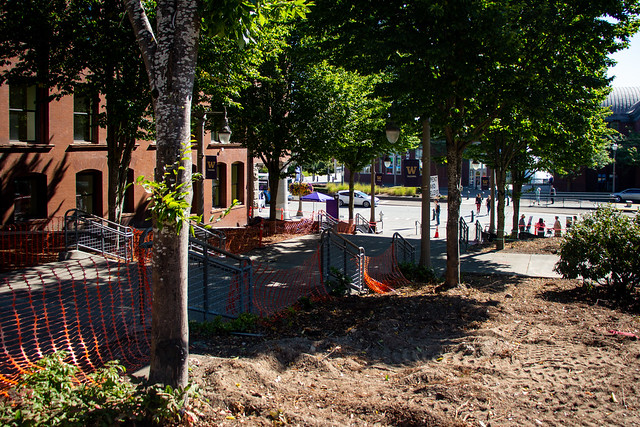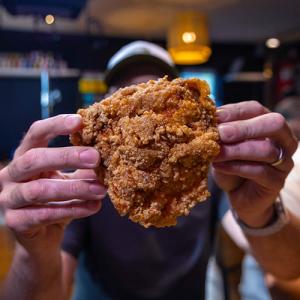New Irrigation System Will Reduce Water Use
The system is part of a larger plan by Facilities Services to conserve water on campus.

UW Tacoma’s Facilities Services are in the process of replacing an outdated irrigation system between Garretson Woodruff Pratt (GWP) and Walsh Gardner (WG). “Tree roots wrapped around the control valves and broke through the pipes,” said Lead Gardener Kim Bode. “There wasn’t a way to repair the damage without taking out a tree and we didn’t want to do that.”
The existing irrigation system between GWP and WG is 22 years old. A new irrigation system is slated to be installed later this summer. “We’re upgrading with the goal of reducing water consumption,” said Bode.
Maximizing water efficiency has been a key mission for Facilities Services since 2013. This effort includes installing motion sensors in faucets, urinals and toilets as well as switching to a new sprinkler system. The Rain Bird sprinkler system is fed real-time information on absorption rate, evaporation rate and temperature from a weather station on the Prairie Line Trail.
The push to use less water has paid off. “In terms of landscaping, we’ve been able to cut our water use in half across campus,” said Director of Facilities Services Stanley Joshua.” “With this upgrade we’ll be able to reduce our water consumption by 50% in that particular zone.”
The new irrigation system will utilize drip emitters on each plant instead of sprinklers that throw water across an entire bed. Moisture sensors in the ground will relay data to Rain Bird. “If the soil is wet enough for a particular plant then it won’t get watered at that time,” said Joshua. “This is another way we’ll be able to control consumption.”
Earlier this month crews dug up the area between GWP and WG. Native plants were removed as was a years-old weed barrier. “Over time, the fabric slowly started to suffocate the soil,” said Bode. “We’re going to rehabilitate it with some compost and mulch to get nutrients back into the dirt.”
Safety was also a factor when determining whether or not to keep existing plantings. Crime Prevention through Environmental Design (CPTED) is a way of utilizing the landscape to increase public safety. The philosophy is multifold and includes clearing sightlines of obstructions and reducing the number of shadowed areas. “A nice, full bush sounds great but it’s really unsafe,” said Associate Director of Maintenance & Operations Tessa Coleman. “There could be something on the ground that one of our gardeners doesn’t see when they reach down to pull a weed.”
Work is scheduled to be complete by the time fall quarter starts on September 25. If all goes well this new system could serve as the model for the rest of campus. “We’re trying to create a standard design that we utilize in other spaces,” said Coleman.



